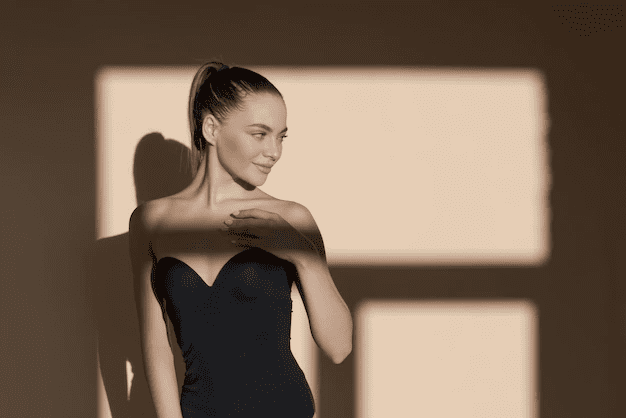Rhinoplasty
Deformities in the nose are one of the most important reasons that negatively affect facial aesthetics. In addition to aesthetic problems, cartilage and bone curvatures in the nose and previously formed nasal fractures cause important health problems in breathing. For these reasons, people tend to have rhinoplasty surgeries in order to both breathe healthier and have a more aesthetically acceptable appearance.
How is Rhinoplasty Performed?
The shape and size of the nose are permanently changed by applying various surgical techniques to the cartilage and bone structure of the nose. In this way, the nose can be enlarged or reduced as desired. In some people, while the nose shape is changed, other situations that cause nasal dysfunction can be corrected in the same session.

Rhinoplasty Surgery Techniques
Rhinoplasty surgeries are performed in two ways; closed and open. Closed nose surgery may be insufficient in people who have had surgery before. Closed Technique and Open Technique have advantages over each other, the important thing is that the surgeon uses the technique he is used to in order to get better results. Generally, I perform 95% of the rhinoplasty that I do in people who have not had surgery before, as closed rhinoplasty. I prefer open technique rhinoplasty in some cases and revision surgeries.
The advantages and disadvantages of the Open and Closed Technique are given in the chart.
Closed Technique and Open Technique
| CLOSED TECHNIQUE | OPEN TECHNIQUE |
SKIN INJURY AND STITCHING AT THE TIP OF THE NOSE |
NO |
YES |
NOSE TIP DROP, AND LOSS OF SENSATION | NO | YES |
WOUND HEALING | FASTER | FAST |
TRAUMATIC | LESS | MORE |
PROTECTION OF VESSELS, NERVE, CONNECTIVE TISSUES ON THE NOSE | YES | NO |
VIEWING AREA | NARROW | WIDE |
NOSE TIP CONTROL DURING SURGERY | POSSIBLE | IMPOSSIBLE |
The Ridge Of The Nose Protector Technique
In classical rhinoplasty, the natural nasal structures are deteriorated during the narrowing of the nasal ridge and removal of the nasal arch. For this reason, the nose may lose its natural appearance. In nasal ridge protective techniques, the arch can be removed without losing its naturalness and the nasal ridge can be narrowed. In this way, natural light reflections are preserved. One of the main advantages of this technique is that, unlike classical rhinoplasty, there are fewer long-term problems.
What Is Septum Deviation?
The structure consisting of cartilage and bone that separates the two nostrils is called the nasal septum. Curvatures in this structure are described as septum deviation. This situation is quite common in society. . Most of the time, surgical correction is not necessary. Since the physiology of the nose has a very complex structure, septum deviations sometimes cause very serious breathing problems and sometimes they are not noticed by the patients. Septoplasty, that is, correction of septum deviation, although it is a very common operation, does not always guarantee correcting the lack of air in the nose. Septum deviasypon surgeries are operations that can be performed either together with rhinoplasty or alone.
Before Operation
With the preliminary examination, detailed information is given to the patient about the procedure to be performed. The conditions that the patient should pay attention to before the operation are reported by the doctor. The patient is examined and evaluated both functionally and aesthetically. The person's expectations are revealed with the help of the computerized simulation made after the photo shoot and the patient is informed about the appropriate intervention. Anesthesia consultation is requested together with the necessary analyzes before the operation.
After Operation
In the postoperative period, sometimes one night hospitalization is required. Bruising caused by small blood leaks in the subcutaneous capillaries and swelling due to skin and subcutaneous tissue edema may occur. Bruising and swelling, which varies completely from person to person, may not be present in some patients, and in some patients it may be more than expected. Although bruising and swelling do not affect the outcome of the surgery, they usually regress within a week or ten days.
Plaster and Tampon
In classical rhinoplasty surgeries, plaster is mostly used to keep the bone and cartilage structure of the nose stable during the healing process, and the tampon is mostly used to prevent blood accumulation under the tissues in the nose. In the above-mentioned nasal ridge protective techniques, there is no need to put a plaster cast since the integrity of the nasal cartilage and bone structure is preserved during the surgery.
Healing Process
Although crusting in the nose and nasal congestion are frequently encountered in the early period, they improve within weeks. It should be noted that most of the time, rhinoplasty is a narrowing operation, so there is a 5%-8% narrowing. Contrary to popular belief, patients describe pain after this surgery or feel a pain that can be relieved with a simple painkiller. Bruising and swelling regress within 1 week, and the nose becomes acceptable in the first month. It takes one year for the nose to take its final shape.
